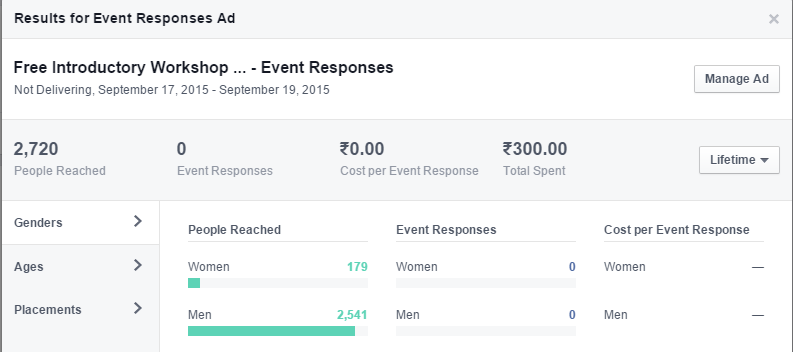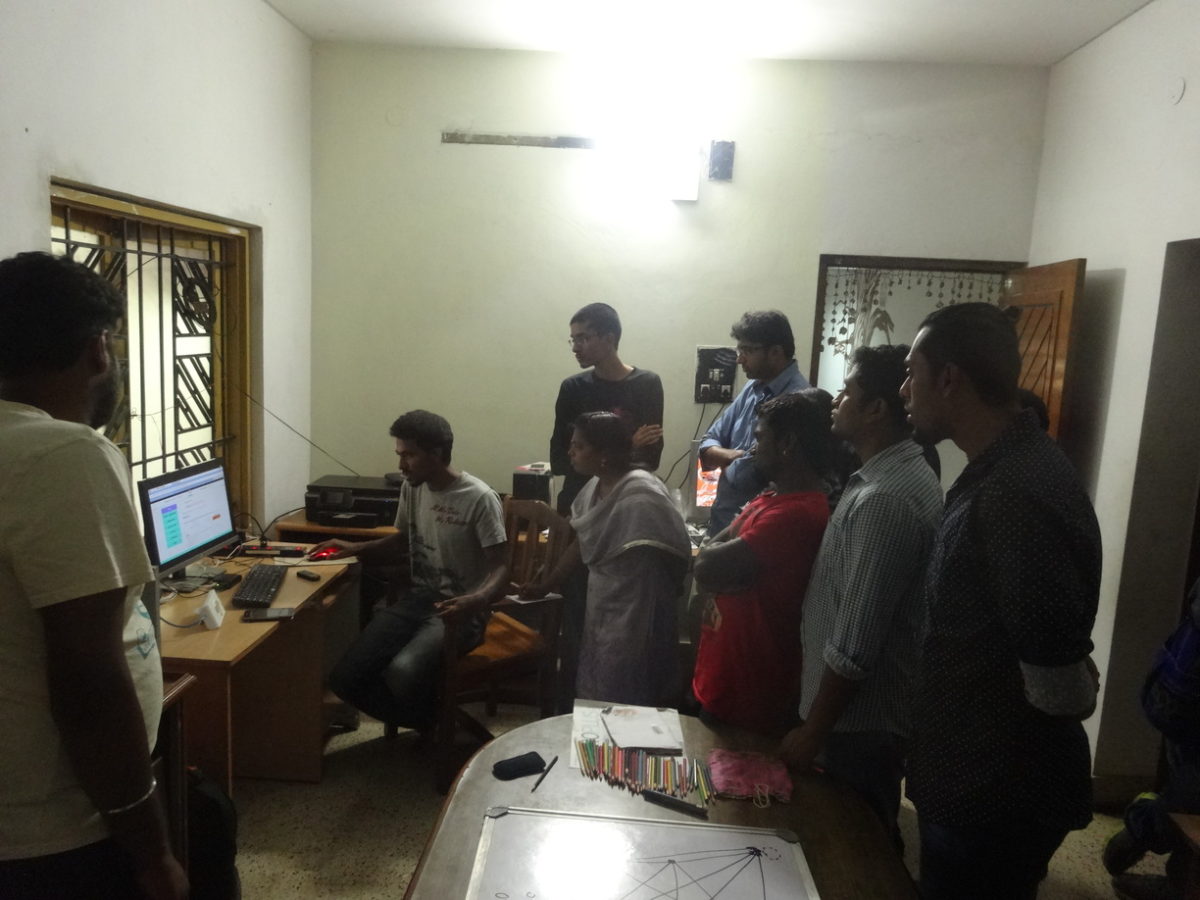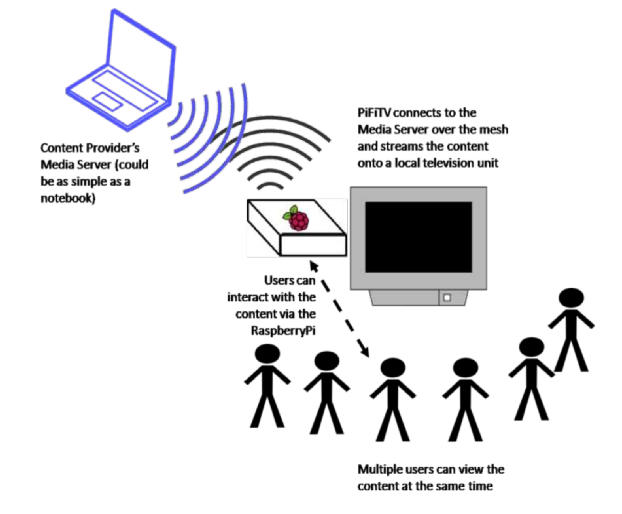Keyshav Mor from Pune asked us how to leverage Facebook to market an event he was recently promoting. We suggested a comparison between Facebook’s paid publicity feature and organic outreach (i.e. silicon vs carbon). Here’s what he found –
How often does one get an amazing idea for a business but gets stuck in the marketing and advertising part of it? Then comes the idea of running the advertising campaign through Facebook and other social media websites. Even I got the idea at one point out of sheer curiosity and why not? You pay Facebook a certain amount amount of money for a fixed time period and get to sit back and relax without worrying much about advertising and the struggles involved with it. But sorry my friends, that is not how it works and it definitely isn’t productive. So Arjun Venkatraman of Mojolab and I decided to partner up for the experiment to prove how Organic Marketing trumps social media advertising.
Organic marketing is marketing through a chain of friends whom you explain the concept and product you are looking to promote. So the basic need for organic marketing is to make friends. You make sure that you are useful in someway to your friends so that they are willing to help you in return. Initially, this takes time. But as you practice it over a period of time, organic marketing gets easier. On the other hand social media advertising is simple. For example on Facebook, you decide the product you want to promote, you choose the target audience, you choose the currency and the budget along with the duration and then you are set.
The Product/Event :
To conduct the experiment, we chose the “Personal Healing Workshop” conducted by Personal Healing Institute, Pune under the Guidance of Ashwin Mohan and Anomit Ghosh of Forge Mixed Martial Arts, Pune. Ashwin and Anomit carried out the organic marketing part while I was involved in the Facebook advertising campaign. Lets look at the quantitative aspects of both the approaches .
Organic Marketing :
The 3 important resources in any marketing are : Time, Money and Friends. So these resources remain constant in this experiment too . Anomit and Ashwin approached the organic marketing part in two different ways. Anomit approached people and explained them the concept over telephone calls and by meeting them whereas Ashwin demonstrated the actual healing demo. We will quantify these efforts in terms of time and money spent while keeping in mind that time is also money.
Anomit had concentrated efforts of about 10 hours spread over a week. These included calling up people as mentioned earlier along with preparing content. Now when we talk of organic marketing, it doesn’t mean offline marketing alone. It also includes Facebook posts and the subsequent sharing of the post by the friends and followers of Forge MMA Facebook page. As a result this Facebook activity is also included in the 10 hours of efforts put into marketing the event.
Ashwin on the other hand promoted the event on Facebook and also by demonstrating healing in a demo class of two hours attended by around 30 people. Both didn’t travel anywhere to promote the event so travel time and expenses are not included. On a safer side we assume that a total of 24 hours of efforts were put in.
Anomit put in a recharge of Rs. 400 in his Vodafone cellular prepaid connection. Along with this we assume additional expenses of Rs. 600 on Internet,Power and refreshments offered to prospective participants. Mind you these expenses are spread over a time period of 7 days. So in all Rs. 1000 are assumed to be spent along with combined efforts spanning 24 hours.
Now lets get down to actual number of people reached through this campaign. A research by TechCrunch has found out that an average Facebook post reaches only 12 % of your friends. For simplicity we assume a reach of 10 % . This too when your posts are visible to “Friends of your Friends”. Anomit and Ashwin have a total of around 1000 friends on Facebook. Forge MMA which served as a platform for promotion had around 350 followers before the start of workshop. Thus it is safe to assume Anomit and Ashwin reached around 100 people through their posting about the workshop. Average number of Friends people have on Facebook is 338. As a result by the 10 % rule, number of people reached by the 100 people who saw Anomit and Ashwins post totals up to 3380. Following this rule, it is quite logical to assume the post can reach around 114244 people if the 10 percent rule is followed. But since not everyone’s profile and posts are exciting enough to repost the updates, it is safe to assume that along with the 3480 people reached, some 6000 people also see the promotional poster of the healing workshop over a period of 1 week. Assuming a standard 5 min conversation call at 2 p/ sec through Vodafone prepaid around 66 people were reached by Anomit through calling them on cellphone. These people were requested to suggest the workshop to 20 more of their friends. Assuming half of the people did their work sincerely, around 660 people were made aware of the workshop. Thus in all its safe to assume that around 10000 people across Pune city and even the state and the country were reached through the organic marketing campaign at the cost of Rs 1000 and a 24 hour timeline spread over a week.
Out of the number of people reached 12 decided to participate in the current workshop while 12 others decided to join the workshop which would be conducted in future. Thus out of the 10000 people reached 24 people signed up. That is a conversion rate of 0.024 %. If we reduce the value of people reached the percentage obviously increases. But a Facebook advertise with Pune as its defined area of promotion and customised interests pertaining to Yoga, Fitness and Arts with a budget of Rs 1000 spanned over a week fetches you a reach of around 15000 . Thus 10000 is still a safe value to work with. The conversion rate might seem dismal, but when you consider a course fees of Rs 12000 per head and 24 interested participants, the organic campaign fetches a total of Rs 288000 against an investment of Rs 1000. Even though the returns are spread out over a period of 6 months, the profit percentage is a magical 28800 %. Now you may think this is exaggeration. So lets put in some additional expenses. In the second scenario, lets say that the teachers invested Rs 12000 learning these techniques themselves before teaching. That results in a total investment of Rs 13000 in planning and marketing the course over a period of time. Even this scenario results in a profit percentage of 2215 %. Mind you the place where the workshop was conducted was free from rent .( That is where friends come into play .)
Facebook Ad Campaign :
Running a Facebook ad campaign is fairly simple as stated earlier. You decide the product type you are looking to promote, in this case an event. You give a suitable name and title to the ad campaign to monitor it from your own Facebook account. Later on you set the desired radius area, which was set as “Pune+ 10 miles”. The interests varied from sports to arts to fitness and well being to healing and yoga. All possible categories were included keeping in mind the target audience which was : Urban corporate,artistic , sporting and student population. The budget was set at Rs 300 for 48 hours. The bid was set at Rs 5 per click on the advertising campaign. The following picture gives an overall result of the campaign :
After first 24 hours , the bids were changed at regular intervals of 8 hrs each from Rs 5 to Rs 10 to Rs 15 in order to increase the reach. Finally the number of people reached were 2720 with no online response although one participant came to attend the workshop after seeing the Facebook ad. That is a conversion rate of 0.00036 % spanning 48 hours. Way less compared to 0.024 % conversion rate through organic marketing. Talking in monetary terms, considering the first scenario the Facebook ad campaign reports profit percentage of 4000 % and through the second scenario the campaign reports a loss of 2.5 %. So if Rs 1000 were invested in Facebook ad campaign, a total of 15000 would have been reached with 5 people attending the workshop considering the conversion rate. That is a profit percentage of 6000 % in first scenario and the second scenario results in profit percentage of 461 %.
Thus looking at above stats, it is concluded that Organic marketing wins hands on against Facebook advertising on every front for an equivalent reach and investment. In the event of organic marketing having lesser reach, it only results in better conversion rate and better profit percentage per person reached. So these are the stats which support our theory that Facebook advertising doesn’t work. So how does this happen?
Simple. Facebook has a lot of fake profiles. These profiles increase at an alarming rate daily. By fake profiles, I don’t mean that the people are fake in profiles, the people are real but they are paid by agencies contracted by Facebook to click and share on the advertises commissioned the Facebook. Thus Facebook gets the work done for cheap and makes its profits anyway and you have no way of questioning the modus operandi since you got your likes,shares , clicks and the estimated reach, never mind the fact that it didn’t result into anything of importance.
Solution? Make friends. How to make friends ? Helping people out and sharing or renting out stuff you don’t really need on daily basis. That is how organic marketing works. That is how organic marketing triumphs !








 eregulated medium in most countries. Most internet users are familiar with Wi-Fi networks and most mobile devices today come equipped with an inbuilt Wi-Fi adapter. Typically Wi-Fi is set up in a hub-and-spoke configuration, where one Wi-Fi hub provides connectivity to many clients. The hub acts as a gateway to process all traffic on the network and in order to communicate with peers on the network a user must go through the gateway. This is analogous to the service provider model of communications and Wi-Fi has a strong use case as a means to share a single internet connection between multiple users.
eregulated medium in most countries. Most internet users are familiar with Wi-Fi networks and most mobile devices today come equipped with an inbuilt Wi-Fi adapter. Typically Wi-Fi is set up in a hub-and-spoke configuration, where one Wi-Fi hub provides connectivity to many clients. The hub acts as a gateway to process all traffic on the network and in order to communicate with peers on the network a user must go through the gateway. This is analogous to the service provider model of communications and Wi-Fi has a strong use case as a means to share a single internet connection between multiple users.








 The Mojolab Foundation is very happy to announce the PeopleTech Internships in  partnership  with
The Mojolab Foundation is very happy to announce the PeopleTech Internships in  partnership  with